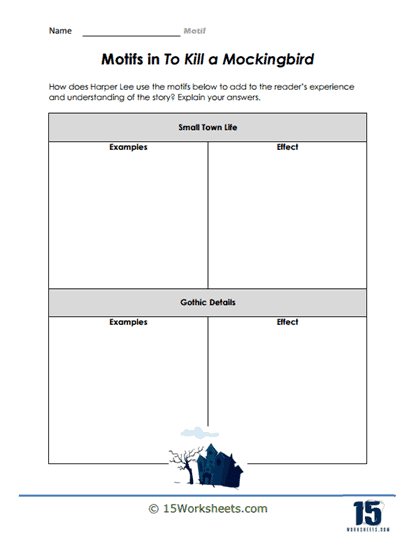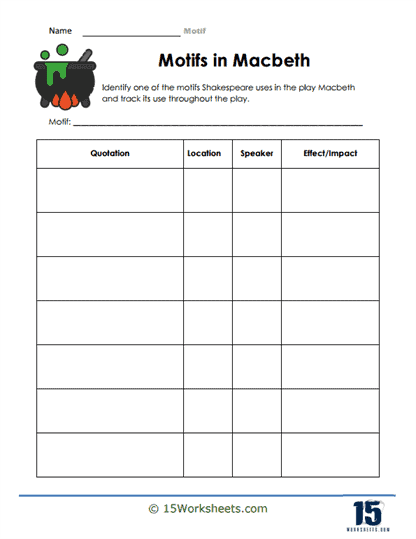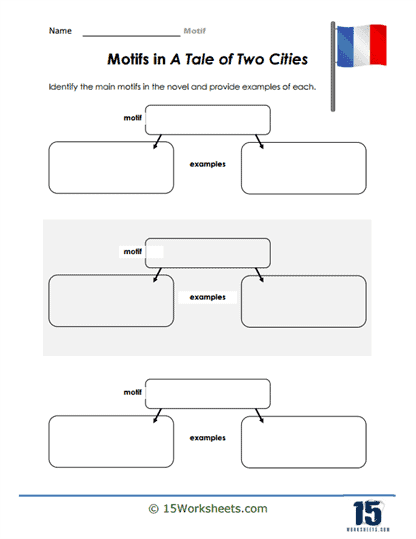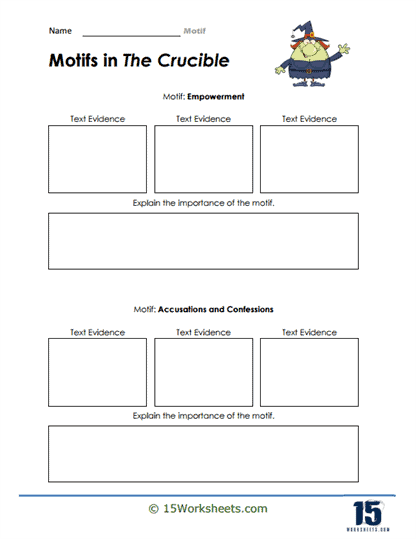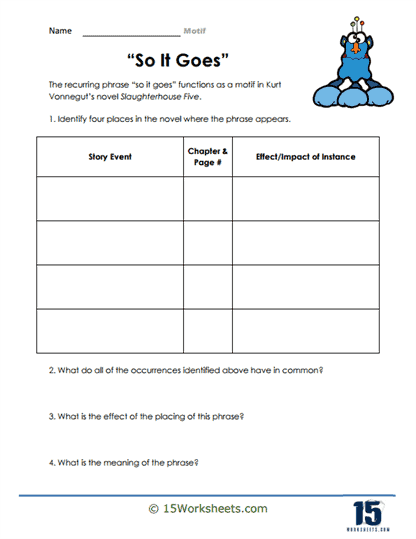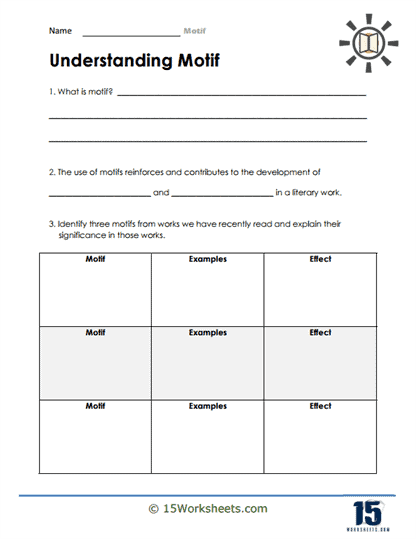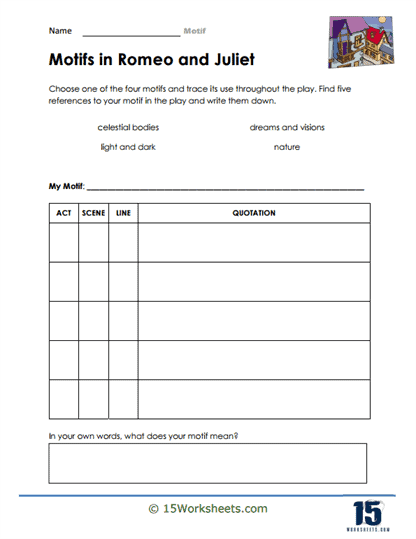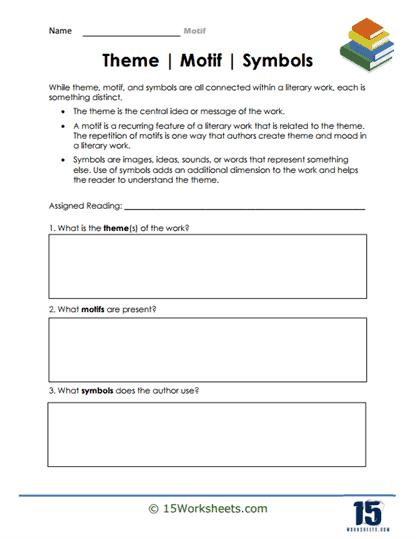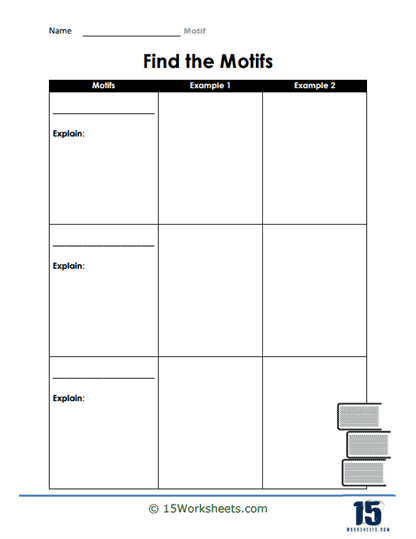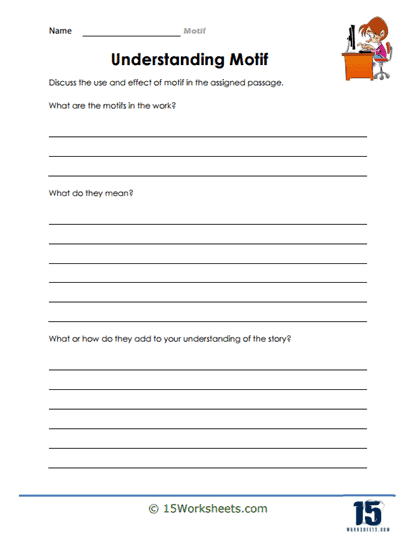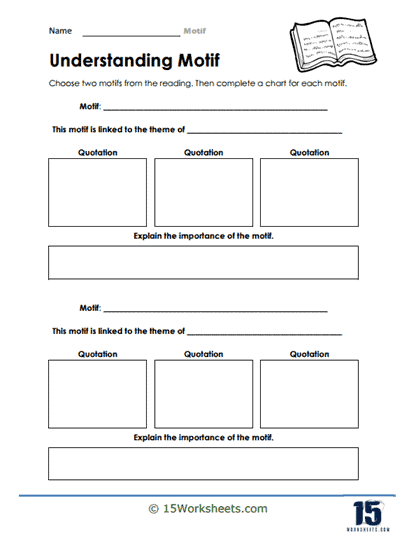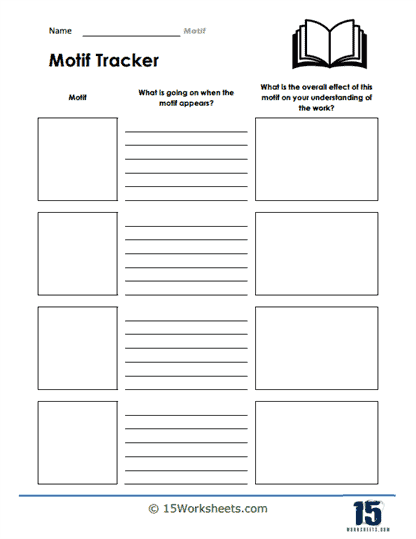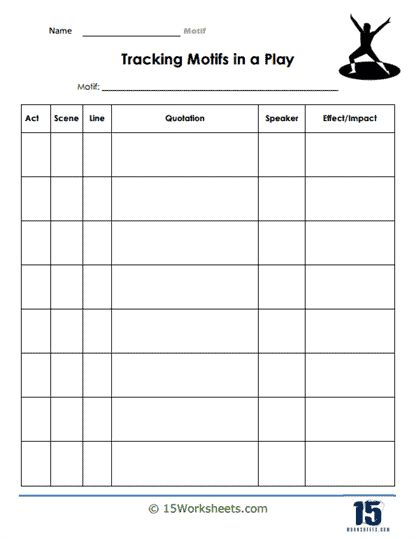Motif Worksheets
All About These 15 Worksheets
Motifs, recurring symbols, themes, or elements in literature and art, are a crucial aspect of storytelling and creative expression. Understanding motifs not only deepens students’ appreciation of literature and art but also enhances their ability to analyze complex narratives and identify underlying themes. This collection of 15 worksheets is designed to introduce students to the concept of motifs, helping them grasp the importance of this literary device, recognize its presence in various works, and apply it effectively in their own writing and critical analysis.
What Are Motif Worksheets?
Motifs are recurring elements in a story that have symbolic significance. They could be symbols, sounds, actions, ideas, or words that the author uses repeatedly to highlight a theme or a character. Understanding motifs is an important part of literature study as they give depth to the story and help us understand the author’s message better.
Our motif worksheets were developed to help students identify and understand the use of motifs in literature. It’s essentially a guided exercise where students practice finding and analyzing motifs in different texts.
Here are some examples of exercises that you might see on these worksheets:
Identification – In this type of exercise, a piece of text or a summary of a story will be provided. The student is asked to read through it and identify any recurring elements that could be considered motifs. For instance, if the text repeatedly mentions a ‘green light’, like in “The Great Gatsby”, the student should be able to identify it as a possible motif.
Analyzing – Once a motif is identified, students might be asked to discuss or write about its symbolic significance. What does the ‘green light’ represent in the story? Why does the author keep mentioning it? In the case of “The Great Gatsby”, the green light is a symbol for Gatsby’s dreams and hopes for the future.
Linking Motifs to Themes – This exercise helps students understand the connection between motifs and the larger themes of the story. For example, how does the ‘green light’ motif tie into the themes of ‘The American Dream’ or ‘unrequited love’ in “The Great Gatsby”?
Creating Motifs – In a more creative exercise, students might be asked to write a short story using a specific motif. This helps them understand how motifs can add depth and meaning to their own writing.
Why Do Authors Use Motif As a Literary Device?
A motif is a recurring symbol, theme, subject, or idea that appears in a piece of literature. Unlike themes, which are messages, statements, or concepts, motifs are specific and tangible elements within a story that repeat and, through their repetition, highlight and reinforce the work’s main themes.
Authors use motifs to make their narratives more cohesive and emphasize the central themes or moods they want to convey. Motifs create a sense of unity and coherency within the work, leading to a more satisfying and immersive reading experience.
Defining Features of a Motif
The primary defining feature of a motif is its recurrence. A motif is an element that appears repeatedly throughout a literary work. These recurring elements could be anything from objects, symbols, words, phrases, situations, or images. Motifs are not just recurring elements but elements that repeat with a purpose to shed light on the theme, character, or the mood of the story.
Examples of Motifs in Literature
The “Green Light” in “The Great Gatsby” by F. Scott Fitzgerald
One of the most famous motifs in American literature is the green light in “The Great Gatsby.” The green light is first seen by the protagonist, Jay Gatsby, as he looks out towards the water from his mansion. It’s a symbol of his longing for Daisy Buchanan, his lost love. The green light represents Gatsby’s dreams and hopes, not just for Daisy but for the unattainable, idealized version of the American Dream. The repetition of the green light motif throughout the novel emphasizes Gatsby’s obsessive desire for what he cannot have.
The Mockingbird in “To Kill a Mockingbird” by Harper Lee
The mockingbird motif is the key symbol in Harper Lee’s novel. The characters discuss how it’s a sin to kill a mockingbird, as they don’t do anything but sing for our enjoyment. This bird represents the idea of innocence, and harming a mockingbird symbolizes the destruction of innocence. The motif is seen when innocent characters like Tom Robinson and Boo Radley are harmed or killed, reflecting the novel’s central themes of racial injustice and the loss of innocence.
Blood in “Macbeth” by William Shakespeare
In “Macbeth,” blood is a potent motif that underscores the dire consequences of unchecked ambition. Initially, blood represents honor and bravery, as seen on the battlefield. However, as Macbeth becomes more treacherous, blood starts to symbolize guilt and the horrific toll of his murderous actions. The continual reference to bloody hands, bloody deeds, and the color red throughout the play highlights Macbeth’s guilt and the violence and chaos his ambition brings.
Through these examples, we can see that motifs, through their recurrence, give the narrative depth and complexity. They can illuminate a work’s themes, reveal character traits, create mood, and build a sense of continuity, all of which better engage the reader and enrich the reading experience.
The Benefits Of These Motif Worksheets To Students
Exploring the world of motifs through this collection of 15 insightful worksheets offers students an opportunity to develop essential skills in literary appreciation, analytical thinking, interpretation, cross-cultural awareness, and creative expression.
Motifs are the threads that weave together the fabric of storytelling and art, enhancing their depth and impact. By engaging with these exercises and activities, students not only enhance their academic abilities but also gain valuable tools for exploring the nuances of literature, art, and culture. The benefits of studying motifs extend far beyond the classroom, empowering students to be more discerning readers, skilled writers, and culturally aware individuals in an increasingly interconnected world.

